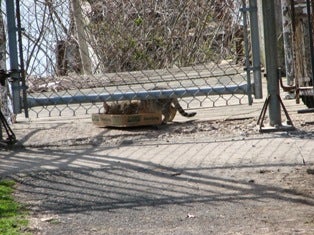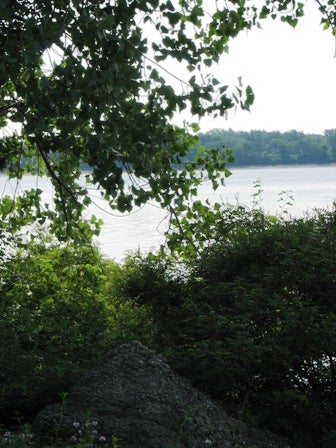Tension between access and industry

By Kellie Patrick Gates
For PlanPhilly
Sarah Thorp, executive director of the Delaware River City Corp., has become well acquainted with the balancing act that comes with bringing people to the waterfront.
Her organization, which focuses on the northern portion of Philadelphia’s Delaware River shoreline, has already begun construction on an 11-mile multi-use trail that will link a series of parks, but also wind through industrial and residential areas, and skirt the city’s water works and fire and police training grounds.
“We are not kicking out industry,” said Thorp, whose organization list economic revitalization as a goal. “This is a working river.”
But business and industry leaders were very wary of the trail at first, she said.
“I was very nervous,” said Ron Geller, President of Morris Iron & Steel, a scrap metal recycling company. “And the employees were very nervous about their livelihood.”
His company, located on Milnor Street, uses the Delaware to ship the scrap metal they recycle.
“There are steel mills in the Carolinas that receive scrap by barge,” he said. “We can go from here to North Carolina for $12 per ton, versus about $50 per ton by rail.” If something blocked the company’s river access, “We’d have to lay people off,” he said.
“You can’t be so tough on industry and say we want you to stay in Pennsylvania and Philadelphia. You can’t say ‘we want a river walk’ and force me to go to Mexico or something like that.”
At the time he first heard of the river walk, Geller’s company was about to launch a $2 million modernization effort. “We put it on hold,” he said.
But after attending meetings and talking to Thorp, Geller said he feels much better. He went ahead with the conversion and is planning to grow his company at its current site.
“We have a commitment from them, a verbal commitment, that they will not interfere with our operations,” he said.
The details have to be worked out – Geller said perhaps the trail will need to veer away from the river at times. His company has lots of heavy equipment and large chunks of metal that could harm people who wander on the site. And he is somewhat concerned about theft.
Thorp said some portions of the trail will be fenced in so hikers have no way of accessing nearby properties. Some parts will run entirely around a property, onto city streets. She thinks that diversity in scenery will make for a more interesting trail.
Thorp also has to consider when people shouldn’t get too close to nature.
“Where people are, it discourages birds from nesting,” she said. “We don’t want to make a trail and provide access to endangered species.”
Take the Pennypack Park portion of the trail. There is a restored wetland where birds and other animals have already returned. The trail will come close enough so that an overlook will provide bird watching opportunities, but there will not be access to the wetland.

Another area, near where the Pennypack flows into the Delaware, already has good wildlife habitat that includes large trees. The paved, multi-use trail will be away from that area, Thorp said. But a narrow wood chip path will allow people to explore the area on foot.
Experts say this kind of compromise can help blend uses – sometimes to the benefit of all.
Residential and commercial properties can exist symbiotically on the same site – restaurants and shops on the ground floor of a residential tower, for example.
And the lure of green space brings more customers to the area, said Toronto-based planner Ken Greenberg.
But not everything mixes well.
Geller, of Morris Iron & Steel, worries that one day, someone will build a residential development close to his factory, and then the people who live there will complain that his facility is unsightly and the trucks that bring in the metal for recycling are too loud.
WHYY is your source for fact-based, in-depth journalism and information. As a nonprofit organization, we rely on financial support from readers like you. Please give today.



